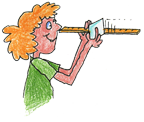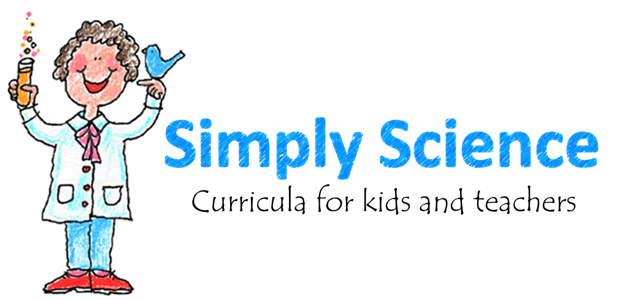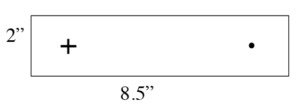Are you teaching light or optics in your physics class or point of view and showing respect towards others during a class discussion? This activity may be just what you need!
What does it mean to have a blind spot?
Why is it important to be aware of your own blind spots?
This activity easily extends from primary grades to high school.
 |
To find your blind spot, close your left eye. Hold a section from this sheet about twelve inches from your eye.
Bring the paper slowly toward you while looking at the plus sign with your right eye. As the paper nears your eye the large dot seems to disappear. Option: Quantify and compare the results. Slide the paper along a ruler as shown. When the large dot disappears notice the distance from the end of the ruler to the paper. |
The blind spot is the area of the retina that does not have any photoreceptive cells. Any images that fall on this part of the eye will not be seen. This is the part of the eye where the optic nerve exits the eye.
Close the left eye. Turn the paper over so that the plus sign is on the right side. Slowly bring the paper toward you while focusing on the plus sign. When the dot disappears, note the inches from the eye. Record the results and repeat to verify.
Option: Record each student’s results on a chart. Average results.
What does a blind spot have to do with safe driving?
For more options, visit an extension of this activity at the Exploratorium Museum, learn about color and blind spots at Visionary Eye Care, or determine the size of your blind spot at Neuroscience for Kids. Here’s a short video about the structures and functions of the eye. The blind spot is mentioned at 8:30. Preview please before showing to students.
Quick Science suggestions take minimal prep time and use common materials.


I think it would be fun to try different colors of ink or paper. Maybe different symbols like stars or happy faces. What if we tried wider or narrower lines or dots? It could easily be an extension for my capable kids that’s easy to do and then quick to share with my class.
A simple way to extend the activity that uses easy to find classroom materials. I wonder if kids would be interested in sharing the activity with family members?
We like to use the information we find at KidsHealth. They have an article about eyes and the great part is you can change the size of the font to make it easier to read and you can click on a horn symbol to listen to the text as it’s read aloud. Here’s the link for “Your Eyes”: http://kidshealth.org/en/kids/eyes.html.
Thanks for sharing! It looks like a great resource!